The DeepSeek Plunge Reveals the Market’s Hand
2025.02.03 04:26
Last week’s market action was bookended by bearish news shocks in two of the bull’s sensitive areas – AI capital costs and tariffs. The result was a revealing week of price action that concluded with bearish patterns in several key indexes.
Keith covers the technical support for the bullish and bearish arguments of the market’s health using all the indicators in Big View in his weekly market analysis video.
If you’re a discretionary trader, the market’s price action relative to the news flow was very revealing with respect to which segments of the market are bullish vs. fragile.
Additionally, the close of the first month of the year is one of the most widely followed, but rarely do investors take advantage of January’s ability to help manage risk and identify trading entry points as we’ll cover below.
Now consider the fact that earnings season is in full swing, and there’s a lot for investors to digest.
Keep It Simple
Here’s what you’ll hear from the standard “so goes January” analysis, and we would agree…
When January is positive, the year tends to be positive. The chart below does a very good job of illustrating not only that statistic but also the power of a trend.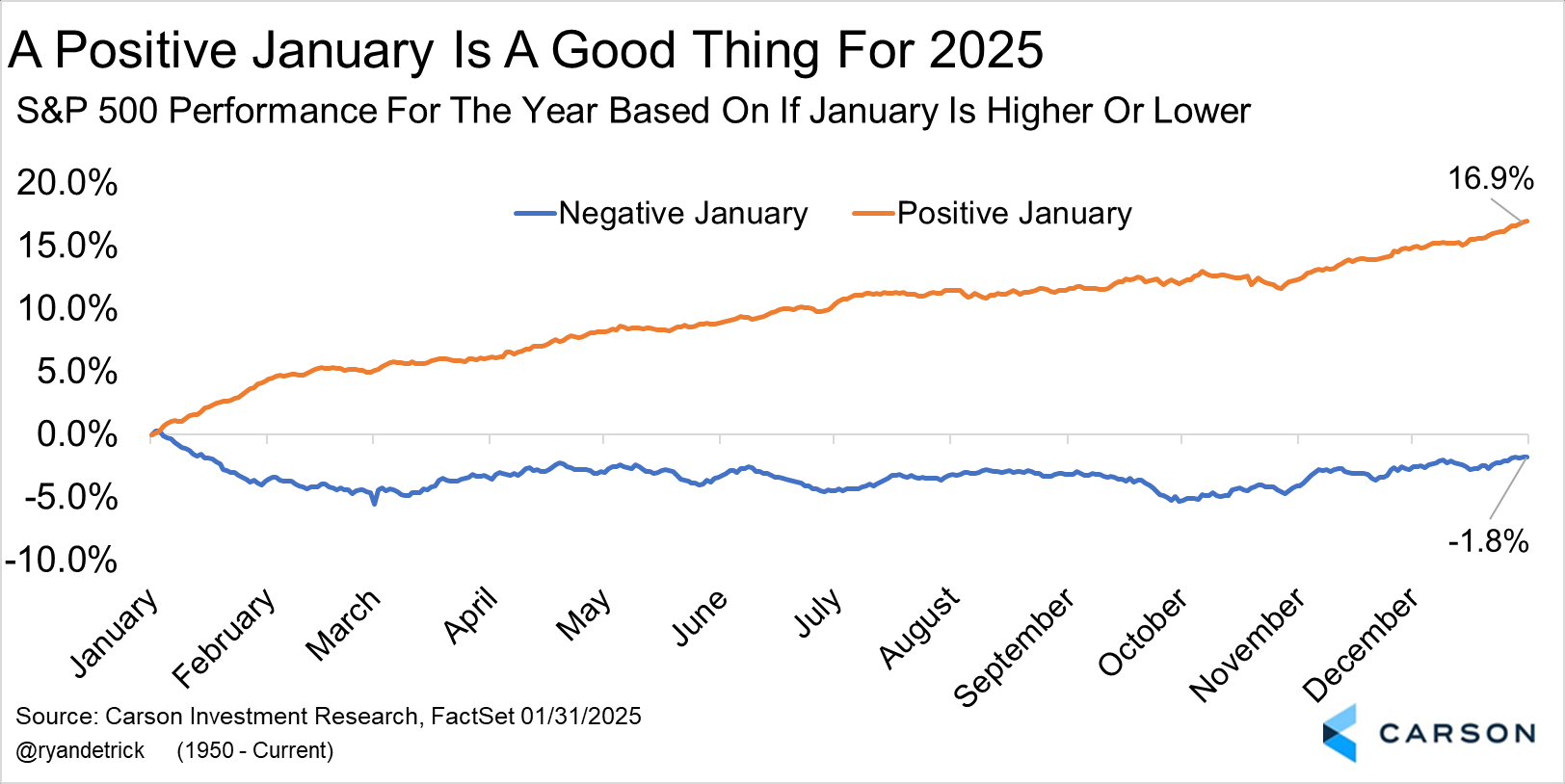
Below you’ll see more detailed and date-specific data to support the same “January is an indicator for the year”.
Simple And Precise
We’d suggest, as we’ve been demonstrating over the last month, that rather than assume the market will continue higher, use our January Calendar Range or even the whole month’s range to define the inflection points at which you consider the market to be truly trending higher (or lower for the year).
This may be a good idea simply because February is one of the market’s least bullish months of the year. As you can see in the chart below, over the last 10 years, the average return has been negative. The same pattern exists over the last 50 years. If you’re a premium Big View member, you can find seasonal charts like this in Big View’s Seasonality section.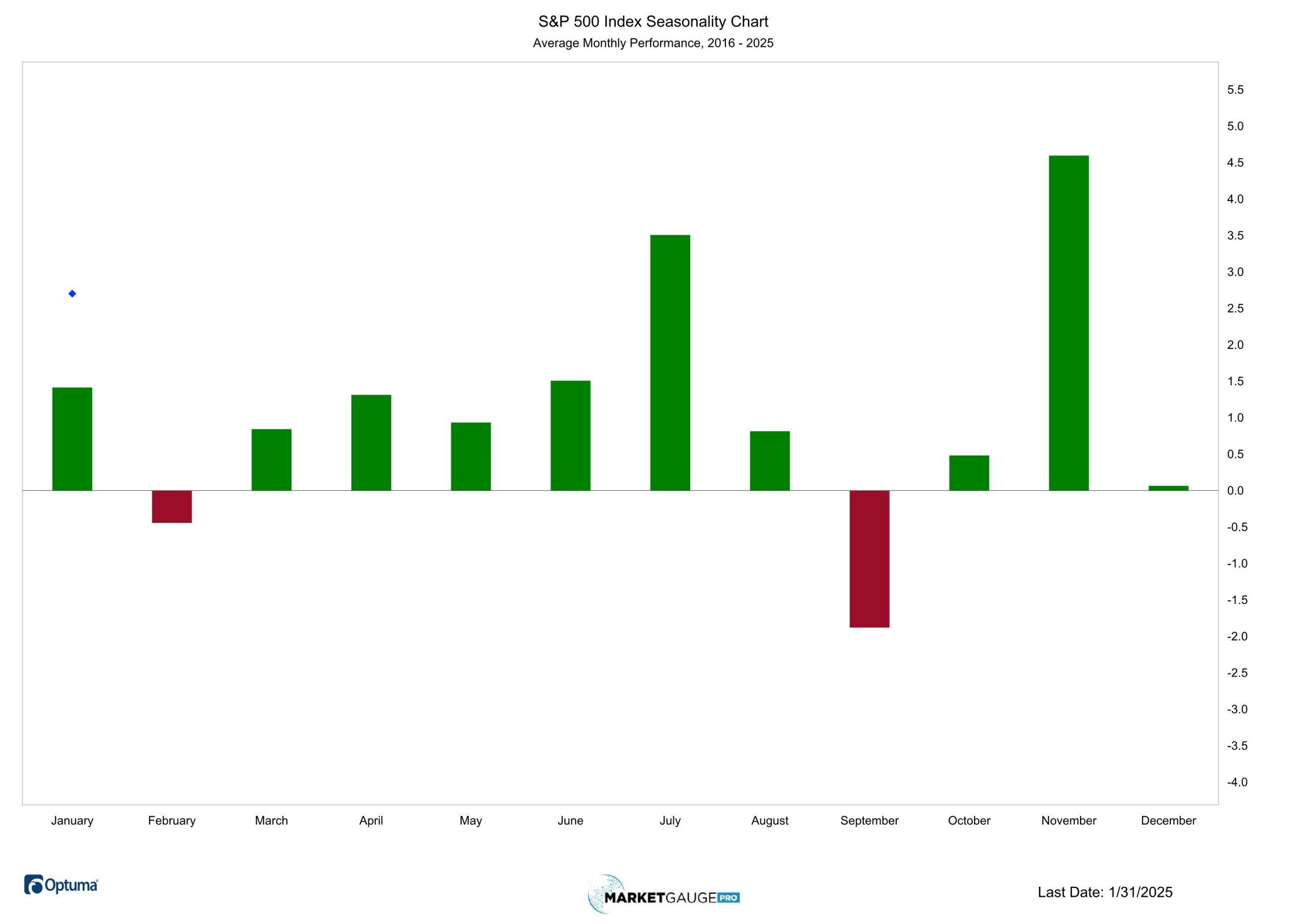
For what it’s worth, the first half of the month has a bullish track record. As you can see in the chart of intra-month daily performance during February below. The last half of the month is responsible for the month’s weak performance.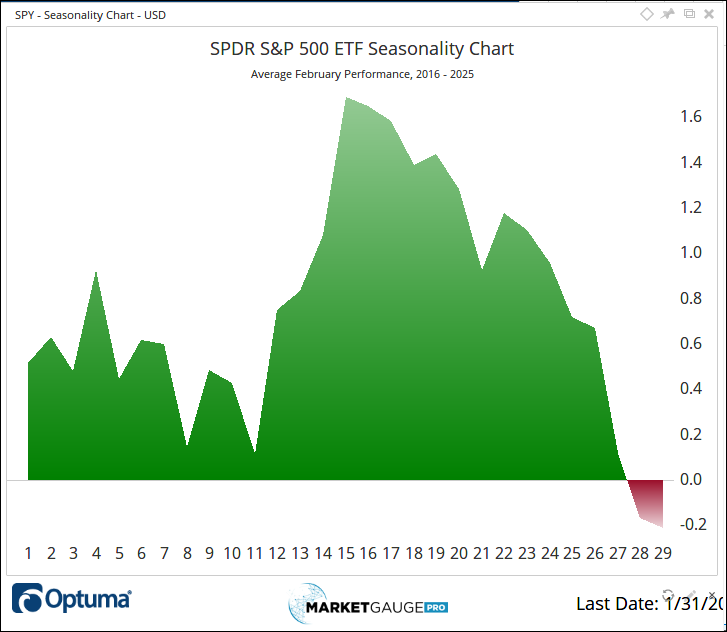
If you’ve been following our use of the January Calendar Range in Mish’s Daily or here (), then you should know there are several simple trading tactics based on the range that was defined by the month’s high and low leading up to Jan 17th.
January Calendar Ranges
Below you’ll see the January Calendar Ranges on the major indexes.
Note that and have not been able to confirm a breakout and are still under the range high. If moves lower, it will also be under its Calendar Range high.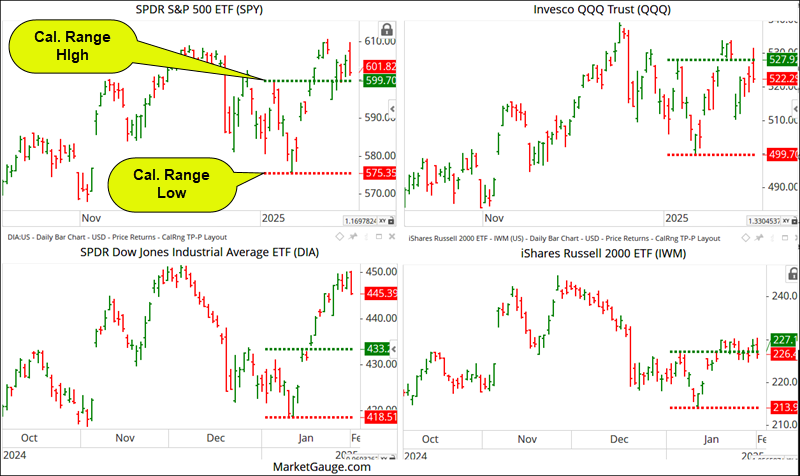
iShares 20+ Year Treasury Bond ETF (NASDAQ:), shown below, has also attempted and failed to break out of its January Calendar Range.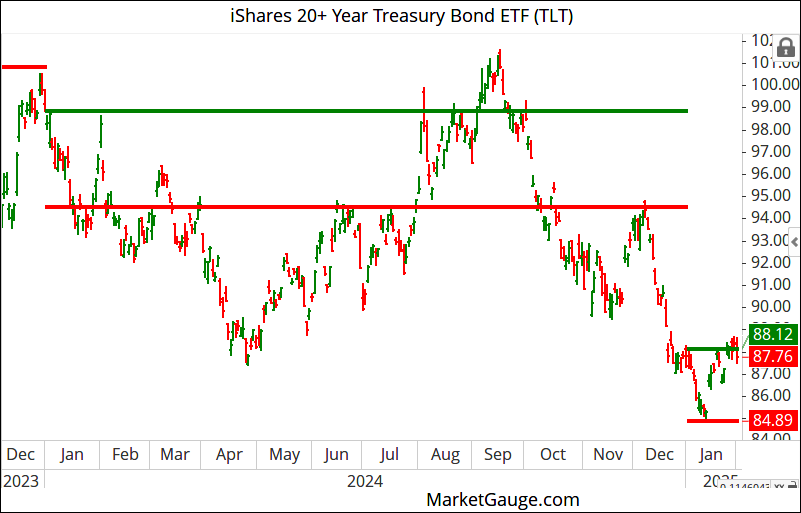
Notice in the chart above how pivotal the red and green January Calendar Ranges were in TLT in 2024.
January is off to a very strong start, and as you can see in the table below, when the has been up over 2% in January, 84% of the time it has closed the year higher with an average gain from its January close of over 12%.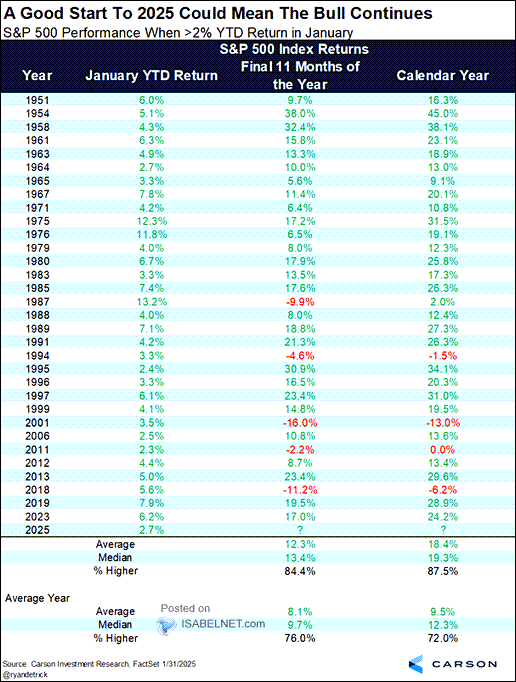
The DeepSeek Plunge Revealed The Market’s Strength
The markets plunged on Monday in fear that the Chinese AI company had demonstrated that U.S. big tech, semiconductor-related, and utility companies with AI exposure might be overspending on AI cap-x, be less competitive, and more.
When markets have negative outsized reactions to industry-specific news, the news event day’s range creates an opportunity to let the market identify the sectors and stocks that investors are bullish on.
Monday’s range can now be used as the range for many stocks and sectors that can define a bullish bias above the range and a bearish bias below it.
Monday’s weakness also demonstrated a broadening strength in the market by the fact that the equal-weighted S&P 500 Index () closed higher for the day.
However, just like a Calendar Range, the message of the market is in the follow-through. Stocks or sectors that trade higher than their Monday range have a bullish edge, while stocks trading below their Monday low may be suggesting they are headed lower.
Mish covered this concept in her Mish’s Daily on Monday and we also covered it in our weekly video on Monday.
The low of Monday turned out to be the low for the week for the indexes and many sectors, so this level can be used as a potential bearish inflection point.
This is particularly true in NVIDIA (NASDAQ:) and VanEck Semiconductor ETF (NASDAQ:) because a break of last week’s low would also be the most significant break below the 50-week moving average since 2023.
What Can We Learn From Tariff News
Just like the DeepSeek market reaction, there is an immediate response and then a follow-through or reversal. Friday afternoon, many indexes, sectors, and stocks were trading near their daily and weekly highs when the White House confirmed that 25% tariffs for Canada and Mexico, and a 10% tariff for China, would begin tomorrow.
The market’s sell-off in both stocks and bonds was consistent and decisive for the rest of the day. This is clearly a bearish, but was it an overreaction?
Monday’s price action will be the follow-through move (if down) or a reversal. It may be difficult to determine the influence of tariffs vs. the potential significance of PMI data and earnings reports.
Earnings Season
With 36% of the S&P 500 having reported earnings, the results are the highest year-over-year earnings growth rate for Q4 2024 in three years.
This week 131 of the S&P 500 companies will report earnings (including 5 components), so this is likely to move markets.
However, the monthly Unemployment report on Friday is likely to get the most attention.
Keep your eyes on the important levels in the indexes, sectors and bonds. Be patient if there’s weakness.







